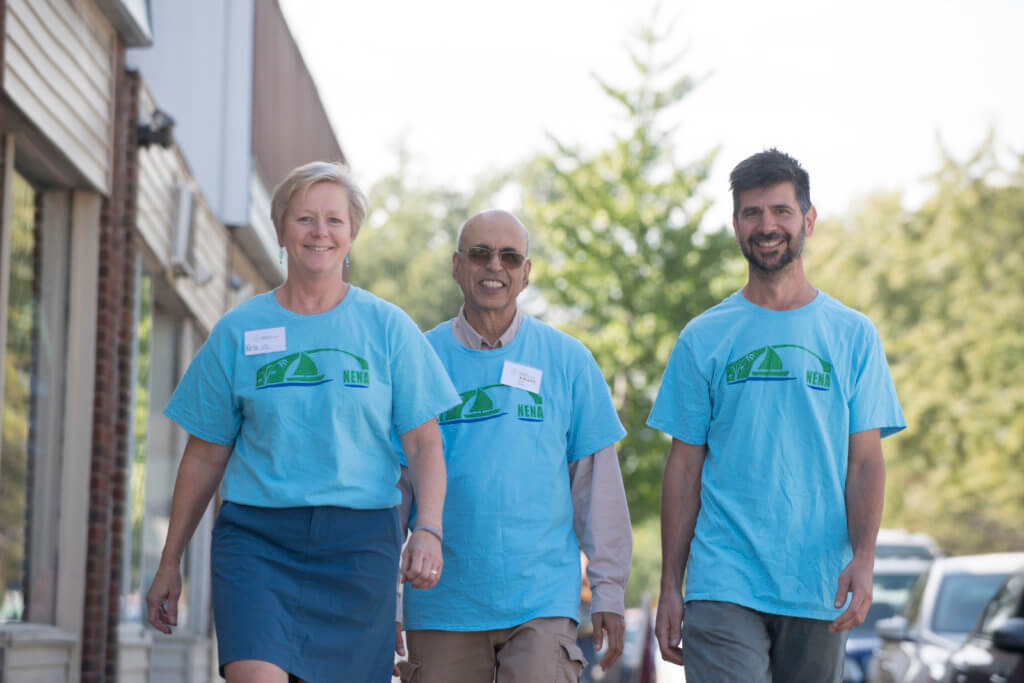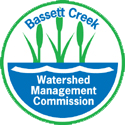News
Monarch Mile: Pollinators Plant Seeds of Change
Mon, Mar 26, 2018Along a unique stretch of East 50th Street in Minneapolis, the Adirondack chairs, pink flamingos and screened porches nestled into the mid-winter snow hold promise of impending spring. Beneath the blanket of snow lie a series of dormant boulevard pollinator gardens dubbed the Monarch Mile, waiting to emerge for their first full growing season. As the community project literally blossoms this spring, the beauty and life above the ground will serve as a poignant reminder of the unseen water quality effect of the native pollinator plant roots below the soil.
One individual who had a hand in planting the gardens is Arun Hejmadi, who lives near Lake Nokomis just a few houses off the Miracle Mile project. Arun has a special appreciation for clean water. “I grew up in India where water is a precious commodity,” he explains. “Eighty percent of the water comes during the monsoon. I also lived in Colorado Springs for 25 years, where we were always on the edge of a drought.” Living in those arid places helped him to understand that, as he says, “very simply, water is life.”

Against that backdrop of scarcity, Arun and his wife moved to Minnesota eight years ago to be with their daughter and granddaughter. He was excited to learn that Minnesota was not only the “land of 10,000 lakes” but also home to the headwaters of five rivers, a dramatic contrast to his previous surroundings.
“When I came here I was both pleasantly surprised and a little shocked,” he says. “Some of the water was so grubby. I looked at the lakes and wouldn’t eat a fish out of some of them. But the other thing that caught my attention was that Minnesota was also very water conscious, the only state in the union to pass a Water Legacy Act.”
Water Stewardship Gives Neighborhood a Boost
Arun decided to take action. He enrolled in the Master Water Stewards training program at a local watershed district, then learned about a new project in his neighborhood called the Monarch Mile. The vision was for a community-based effort to bridge the area between the Nokomis NatureScape (on the east shore of Lake Nokomis) and the Gateway Gardens (a mile to the east and just across from Minnehaha Falls) with a series of pollinator gardens along East 50th Street.
Because of his recent training, Arun knew these new gardens would not only beautify the neighborhood, but also reduce pollution in Lake Nokomis and the Minnehaha Creek. Arun met with the Nokomis East Neighborhood Association (NENA) committee spearheading the project and proposed they consider allowing him and his cohorts in the water stewardship program to provide a water-quality perspective to the gardens as their capstone project. NENA approved and the project was under way.
“I knew I had a tiger by the tail,” Arun says, “because we had a goal to put in 15 gardens and do all this outreach to people. I was excited about it but also a little frightened because it was so huge.”
Garden Project Becomes Catalyst for Change
Arun and his cohorts—Kristen Meyer, a teacher and environmental writer, and Taj Simchoni, a landscaper—worked to engage the community. A mailer was distributed to the neighborhood, but the three believed it would take personal contact to enhance community participation in the project and knew they’d have to hit the streets.
Arun had strong convictions in this regard primarily from two influential speakers. The first was Rebecca Flood of the Pollution Control Agency who spoke at one of the Master Water Stewards’ training sessions and said, “You have to go to the people; it is the people’s minds that must be changed, legislation can only do so much.”
The other influencer was Janet Attarian, whom Arun heard speak at a Moos lecture at the University of Minnesota.
“One of the statements she made that impacted me the most,” Arun says, “was: ‘We must design and implement beautiful, functional, people-centered urban environments that improve the quality of life and protect and restore the natural environment.’” That, he says, is a fitting description of the Monarch Mile project.
Armed with such convictions, Arun and Kristen visited every house along the corridor, knocking on doors, chatting with homeowners in their yards and leaving informative but attractive flyers on doors. Ultimately, fifteen homeowners, a local business and a church signed up and the Monarch Mile initiative took flight.

“We saw this project as a foot-in-the-door educational piece for the property owners and also the neighborhood association,” Kristen says. “We helped NENA broaden the scope of their vision for the project from beautifying the boulevards and creating the pollinator corridor to also incorporating water quality education. Our project turned into less of a technical installation and more of a community awareness project.”
For Kristen, the personal encounters were the most rewarding. “The experience of walking the neighborhood and seeing everyone’s properties, looking at the houses, talking to the people like the guy who was out planting a bunch of trees and bushes on his slope, made me feel a part of the community,“ she says.
The final stage of the project was the actual planting. Volunteers from the Conservation Corps removed sod and prepared the soil. Then they were joined by staff from Metro Blooms and the three master water stewards to do the plantings, including deep-rooted native plants, to reduce runoff. Kristin and Tal also teamed up to plant the pollinator garden at a neighborhood business that signed up, White Crane Construction.
“So all of this came together on this project–collaboration, community engagement and continuing action,” Kristen says. “That describes the trajectory of the project.”
Monarch Mile Gives Sense of Identity to Neighborhood
“In the Nokomis East neighborhood, all of the storm water runs off into either Lake Nokomis or Minnehaha Creek,” Kristin adds, “so homeowners are well-situated to be thinking about their runoff and how that impacts the quality of their local waters. This project also encouraged cohesiveness and a sense of identity as a neighborhood. The Monarch Mile unites the neighborhood with gardens on either end—a great stretch for potential larger water quality projects in the future.”

“We hope this is a stepping stone,” adds Tal. “Just putting in native plants is a good thing, but we believe that building awareness will lead to more effective water management practices in the neighborhood.”
* The Master Water Stewards program, created by the Freshwater Society, certifies and supports community leaders to install pollution prevention projects that educate community members, reduce pollutants from stormwater runoff, and allow more water to soak into the ground before running into storm sewer systems. More information is available here: https://masterwaterstewards.org/

